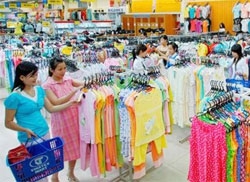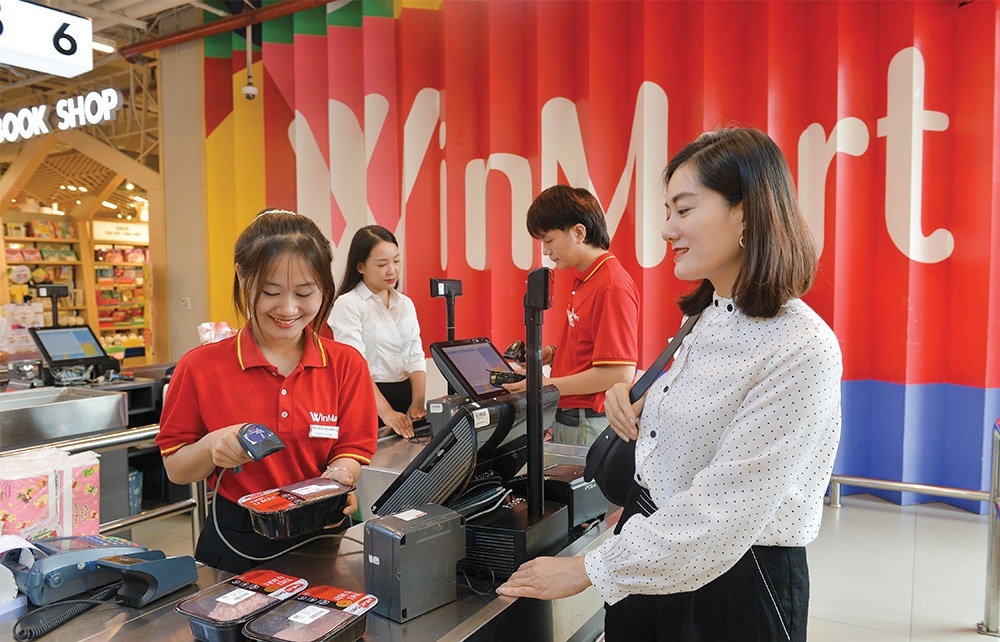Garment firms to stitch deals
 In December 2011 alone, Vinatex launched two big supermarkets in Ho Chi Minh City and Hoa Binh province with total investment capital around VND50 billion ($2.3 million) bringing the total number of its supermarkets to about 60.
In December 2011 alone, Vinatex launched two big supermarkets in Ho Chi Minh City and Hoa Binh province with total investment capital around VND50 billion ($2.3 million) bringing the total number of its supermarkets to about 60.
Vinatex Mart is struggling to have in place 150 retail stores in 2015 and 200 in 2020.
“The monetary tightening policy and high lending rate are roadblocks for garment enterprises in expanding footprints. However, in current context of difficult economy enterprises with good plans can source support from producers and suppliers,” said Vinatex Mart’s general director Nguyen Thi Hong Huong.
In a similar move, also in December Garment Company 10 opened a new shop at Savico Mega Mall Centre in Hanoi and Hanosimex inaugurated a trade centre in Hanoi’s Ha Dong area.
“The demand for garment and textile products has reduced remarkably on the back of high inflation and escalating costs. Hence, enlarging sales system is a risky decision,” said Vinatex’s deputy general director Le Tien Truong.
In fact, export items hold 80 per cent in local textile and garment product structure while the remaining 20 per cent are sold in the domestic market.
The sector envisages exporting 70 per cent of its products by 2020 with the remaining 30 per cent sold in local market.
Reality shows that around VND15 billion ($715,000) to VND20 billion ($950,000) is needed to open a Vinatex Mart or Hanosimex Mart. In favourable positions in Hanoi or Ho Chi Minh City, cost would be much higher. Thus, to open 100 such marts by 2015 Vinatex Mart will have to pump at least VND1,500 billion ($71.4 million).
“Accepting adventures to open more retail stores when the market demand is low is necessary preparations for future growth,” said Vietnam Textile and Apparel Association’s senior advisor Le Quoc An.
What the stars mean:
★ Poor ★ ★ Promising ★★★ Good ★★★★ Very good ★★★★★ Exceptional
 Tag:
Tag:
Related Contents
Latest News
More News
- M&A prospects bright in many sectors (November 21, 2024 | 11:54)
- M&As working in tandem with health development (November 21, 2024 | 11:29)
- Slow disbursement hinders ambitions (November 21, 2024 | 09:00)
- Mitsubishi Estate launches Logicross Hai Phong - a milestone in logistics evolution (November 20, 2024 | 14:32)
- Semiconductor workforce partnerships deliver industry-relevant training (November 20, 2024 | 10:58)
- German Quickpack to invest $31.7 million in Long An province (November 20, 2024 | 09:31)
- Foreign-invested enterprises drive logistics investment in the southeast region (November 20, 2024 | 09:27)
- Chile visit underscores trade benefits (November 19, 2024 | 10:00)
- Trump’s second term impacts sci-tech activities and industry 4.0 technologies (November 18, 2024 | 10:00)
- Vietnam eyes nuclear revival to bolster energy security (November 14, 2024 | 16:46)


















 Mobile Version
Mobile Version